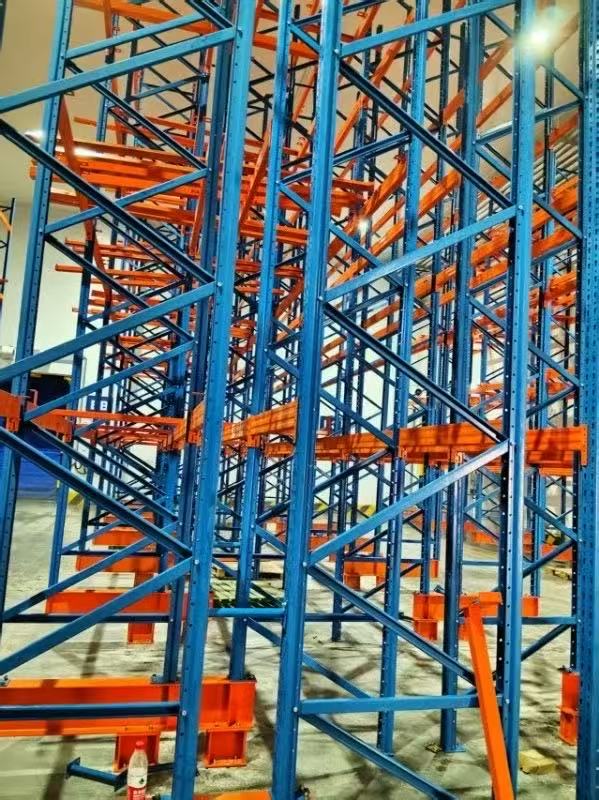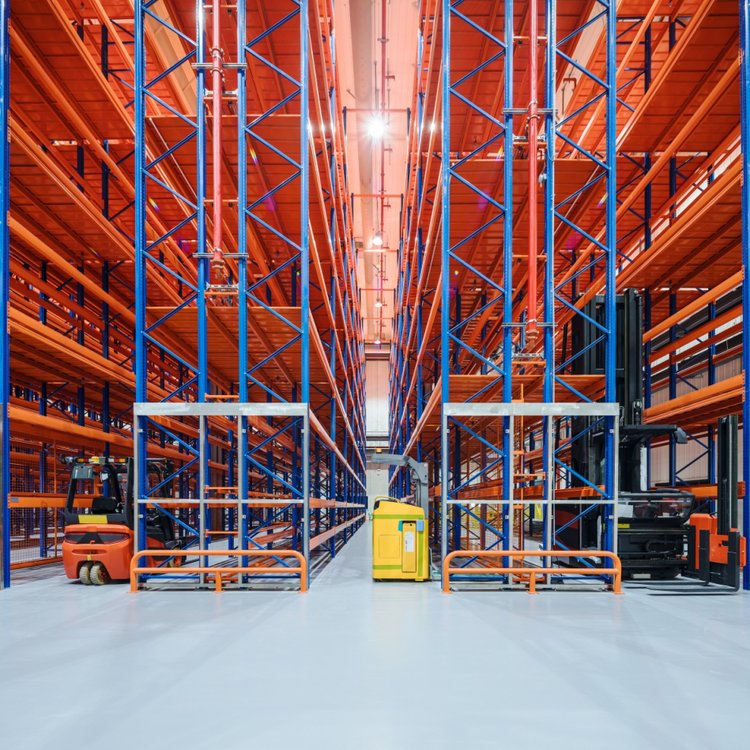In the world of warehousing and industrial storage, efficiency is paramount. The backbone of any organized storage facility is its pallet racking system. Choosing the right system is not a one-size-fits-all decision; it directly impacts safety, storage density, accessibility, and overall operational productivity. With numerous types of pallet racking systems available, navigating the options can be daunting. This comprehensive guide will demystify the world of warehouse pallet racking, providing a deep dive into the various pallet racking types, their core components like pallet racking beam types and types of pallet racking uprights, and crucially, how to identify pallet racking types already in your facility. We will also explore common challenges and questions surrounding identification pallet racking typestypes to ensure you have the knowledge needed to make informed decisions for your storage needs.

Pallet racking is a material handling storage system designed to store materials on pallets (or "skids"). Unlike simple shelving, these systems are engineered structures that support immense weight and are designed for use with forklifts and other mechanical equipment. The primary purpose of any pallet racking system is to maximize storage space while allowing for easy access to stored goods. A standard system is comprised of two main components: upright frames (the vertical components) and horizontal beams. The combination of different types of pallet racking uprights and pallet racking beam types creates the wide array of systems we see in warehouses today.
Understanding the different types of pallet racking systems is the first step in selecting or identifying the right solution. Each type offers distinct advantages and is suited for specific applications.
Selective Pallet Racking
This is the most common and versatile type of warehouse pallet racking. It offers direct, selective access to every single pallet load.
How it Works: Upright frames are connected by horizontal beams to form multiple levels of storage. Each pallet opening is accessible without moving other loads.
Best For: A wide variety of SKUs, first-in-first-out (FIFO) inventory management, and applications where every pallet needs immediate access.
Advantages: Excellent accessibility, easy to understand and operate, highly adaptable to different product sizes.
Disadvantages: Lower storage density compared to other systems, as every aisle requires space for forklift operation.
Drive-In/Drive-Through Racking
These systems are high-density storage solutions that eliminate access aisles by allowing forklifts to drive directly into the rack structure.
How it Works: Drive-In racking has a single entrance, following a last-in-first-out (LIFO) method. Drive-Through racking has entrances on both ends, allowing for FIFO inventory.
Best For: Storing large quantities of a limited number of SKUs (e.g., seasonal items, beverages).
Advantages: Very high storage density, ideal for cold storage where space is expensive.
Disadvantages: Reduced accessibility (not all pallets are immediately available), requires specialized forklift operator skill, higher risk of damage to racks and products.
Push Back Racking
A high-density, dynamic storage system that operates on a last-in-first-out (LIFO) basis.
How it Works: Pallets are stored on wheeled carts that nest on slightly inclined rails. When a new pallet is pushed into the lane, it pushes the existing pallets back. When a pallet is removed, the next one moves forward.
Best For: High-density storage with better selectivity than drive-in systems, ideal for multiple SKUs per lane (though typically 2-5 deep).
Advantages: Higher density than selective racking, better selectivity than drive-in systems.
Disadvantages: Higher cost per pallet position than selective racking, slightly lower density than drive-in systems.
Pallet Flow Racking (Dynamic Flow Racking)
A high-density, first-in-first-out (FIFO) system that uses gravity to move pallets.
How it Works: The system features a slight downward incline. Pallets are loaded at the higher "back" end and flow forward on roller or wheel conveyors to the lower "pick" face where they are unloaded.
Best For: High-volume, fast-moving SKUs with strict FIFO requirements, such as perishable goods or products with expiration dates.
Advantages: Automatic product rotation (FIFO), very high throughput, high storage density.
Disadvantages: Higher initial cost and maintenance, requires a consistent pallet size and quality.
Cantilever Racking
Designed for storing long, bulky, or irregularly shaped items that are not suited for standard pallet racking.
How it Works: The system consists of a single vertical column (upright) with arms that extend outward to support the load. It has no front-facing vertical obstructions.
Best For: lumber, piping, furniture, carpets, and other long-load items.
Advantages: Unobstructed access to stored items, highly adaptable arm heights.
Disadvantages: Not designed for standard palletized loads, generally lower overall weight capacity.

To fully understand pallet racking types, you must understand their components. The combination of beams and uprights defines the system's capacity and functionality.
Pallet Racking Beam Types
Beams are the horizontal supports that hold the pallets. Their design is critical for safety and capacity.
Step-Beams (Box Beams): The most common type. They have a square or rectangular cross-section and are designed to hold roll-formed wire decking. They are strong and versatile for most selective pallet racking applications.
Structural Beams: These are made from heavy-duty steel C-channels that are welded together. They are much stronger than step-beams and are used in high-capacity applications, often in drive-in racking or for very heavy loads.
Double-Step Beams: Used for heavier loads and longer spans, these beams provide extra strength and are often found in bulk storage areas.
Types of Pallet Racking Uprights
Upright frames are the vertical backbone of the system. Their design determines how beams connect and how much weight the system can hold.
Roll-Formed Uprights: The most common type. They are made from coiled steel that is cold-formed into a specific shape. They are cost-effective and suitable for the vast majority of warehouse applications. They feature punched holes (teardrop, round, or keyhole) for beam connection.
Structural Uprights: Built from heavy-duty steel channels (often C-channel or I-beam) that are welded together. They are used in extremely high-capacity applications, severe seismic zones, or in drive-in/drive-through racking systems where impacts are more likely. They typically use bolted beam connections.
Open-Back Uprights: These have a C-shaped cross-section and are lighter. They are less common today.
Closed-Back Uprights: These have a rectangular box-like cross-section, offering superior strength and resistance to impact and torsion. They are often used in high-capacity selective racking.
The ability to identify pallet racking types is crucial for safety, purchasing replacement parts, and planning warehouse expansions. Here is a step-by-step guide for identification pallet racking typestypes.
Step 1: Identify the Overall System Type
Selective: Looks like a series of shelves with wide aisles between them. Every pallet is individually accessible.
Drive-In/Drive-Through: Looks like a solid block of racking with no aisles inside. You will see vertical guide rails for the forklift wheels.
Push Back: You will see multiple pallets stored in a single lane, depth-wise. From the side, it appears layered.
Flow Racking: You will see a sloped lane with rails or wheels inside. Pallets are typically loaded from one side and unloaded from the other.
Cantilever: Easy to spot due to the absence of front columns, with loads supported by long arms extending from a single rear column.
Step 2: Examine the Upright Frames
Look for the Manufacturer's Label: This is the easiest way. Most uprights have a permanent label or stencil near the base that details the manufacturer, model, and capacity. This is the first place you should look for identification pallet racking.
Observe the Hole Pattern: The shape and pattern of the holes are key identifiers.
Teardrop Holes: The industry standard for roll-formed rack. Beams hook into these holes.
Round Holes: Often found on older systems or specific manufacturers.
Keyhole Slots: Used for certain bolt-on connections.
No Holes (Bolted Flanges): Indicates a structural upright. Beams are bolted directly to the frame.
Step 3: Measure Critical Dimensions
If the label is missing, precise measurements are essential for ordering correct parts.
Upright Depth: The front-to-back measurement of the upright frame.
Upright Width: The side-to-side measurement of the upright column.
Bay Opening: The clear horizontal distance between two upright frames.
Beam Length: The total end-to-end length of the horizontal beam.
Beam Height: The vertical height of the beam itself.
Hole Spacing (Vertical): Measure the center-to-center distance between two consecutive holes on the upright. Common spacings are 2", 3", 4", or 6".
Even the best pallet racking systems face issues. Awareness and proactive inspection are key to safety.
1. Damage from Forklift Impacts
This is the most common problem. Impacts can bend beams, dent uprights, and compromise structural integrity.
Solution: Implement strict operator training, install column guards and rack protectors, and establish a regular inspection protocol.
2. Incorrectly Specified or Installed Components
Mixing beams and uprights from different manufacturers or systems can be extremely dangerous. Capacities are engineered for specific combinations.
Solution: Always use compatible components as specified by the manufacturer. Never "make it work" with mismatched parts.
3. Overloading
Exceeding the weight capacity of beams or uprights is a critical safety hazard that can lead to catastrophic collapse.
Solution: Clearly label the maximum load capacity for each beam level. Train staff on these limits and enforce them strictly.
4. Lack of Proper Maintenance and Inspection
Racking systems require regular checks for damage, loose connections, and alignment issues.
Solution: Perform weekly visual inspections by warehouse staff and annual professional inspections by a racking engineer. Create a reporting and repair system for any damage found.
5. Improper Use of Decking
Wire mesh or steel decking is often required for safety and stability, especially for smaller products or to provide necessary support for the system design.
Solution: Install appropriate decking as per the system's design specifications. Do not use beams without decking if it is required.
Choosing and maintaining the right pallet racking types is a strategic decision that forms the core of an efficient and safe warehouse operation. From the ubiquitous selective pallet racking to the high-density drive-in and push back systems, each type serves a unique purpose. Understanding the nuances of pallet racking beam types and types of pallet racking uprights empowers you to build a system tailored to your inventory and workflow. Most importantly, knowing how to identify pallet racking types and components already in use is a critical skill for ensuring safety through proper maintenance and replacement. By being aware of common problems and adhering to strict safety protocols, you can maximize the value, efficiency, and safety of your warehouse pallet racking investment for years to come.
 Wechat
Wechat
 Whatsapp
Whatsapp